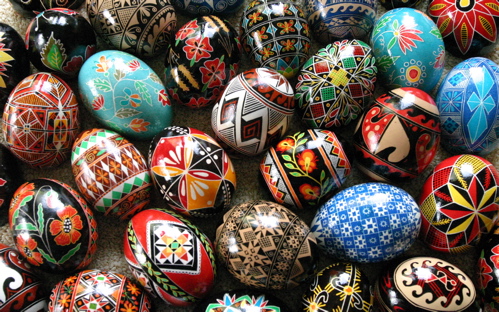Facts About Egg decorating in Slavic culture
The tradition of decorating eggs in Slavic cultures traces its roots back to ancient pagan practices. Over time, these customs blended with Christian rituals, giving rise to the Easter egg as we recognize it today. Despite this religious transformation, the eggs still retain profound pagan symbolism.
Many Slavic groups, including Belarusians, Bulgarians, Croats, Czechs, Macedonians, Poles, Serbs, Slovaks, Slovenes, Sorbs, and Ukrainians, continue to adorn eggs for Easter. This tradition also extends to some non-Slavic groups such as Hungarians, Lithuanians, and Romanians.
Interestingly, the decoration process often involves "writing" on the eggshell rather than merely drawing or painting. Techniques similar to batik, which utilize wax-resist methods, are common. Some popular techniques include using a stylus to apply wax, creating drop-pull designs, employing scratch techniques, painting directly on the eggs, and adding appliqués with various materials.
While there are common elements in egg decoration across Slavic nations, each country has cultivated its unique traditions, making this practice a rich and diverse cultural tapestry.

 Hungary
Hungary